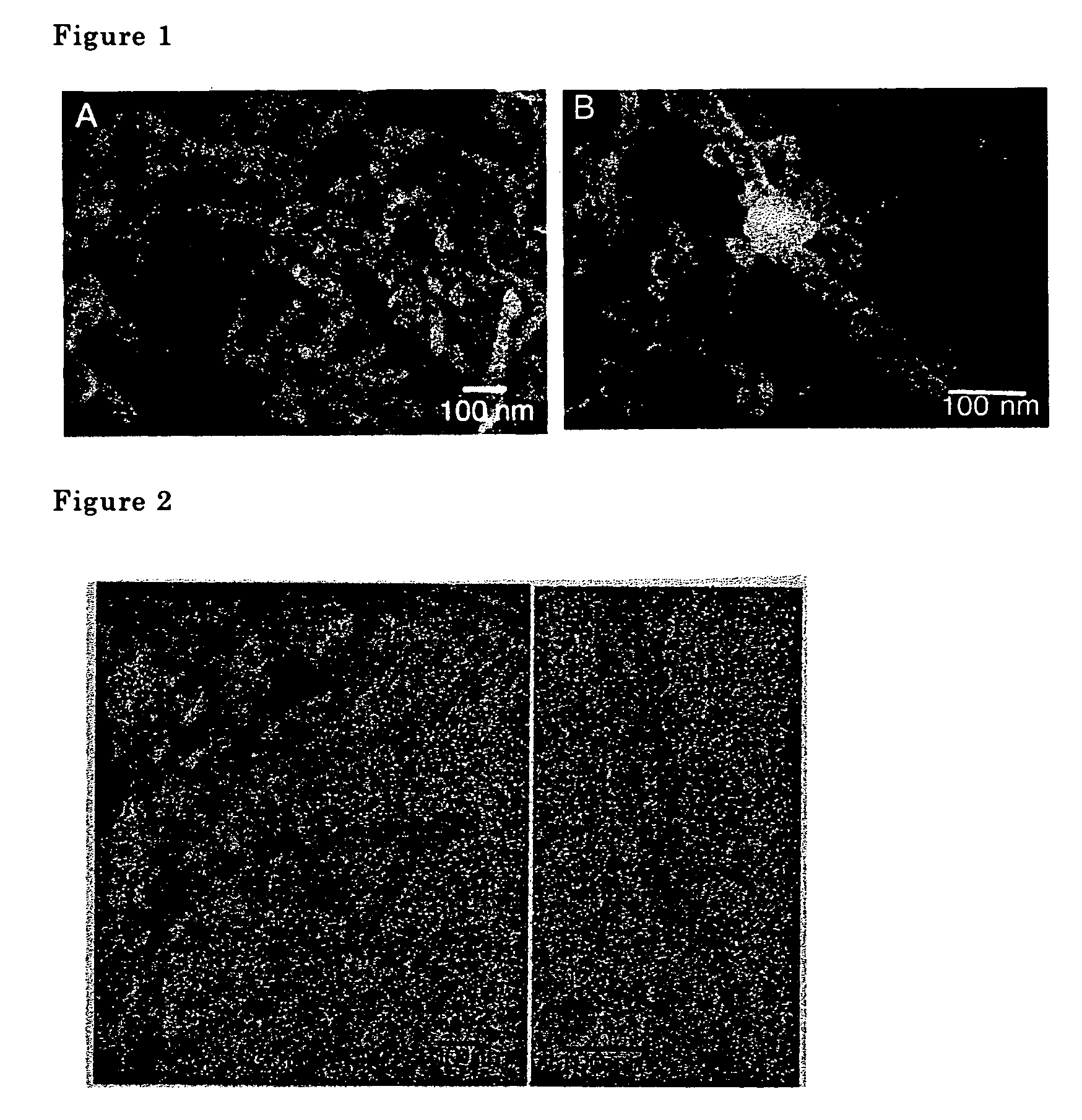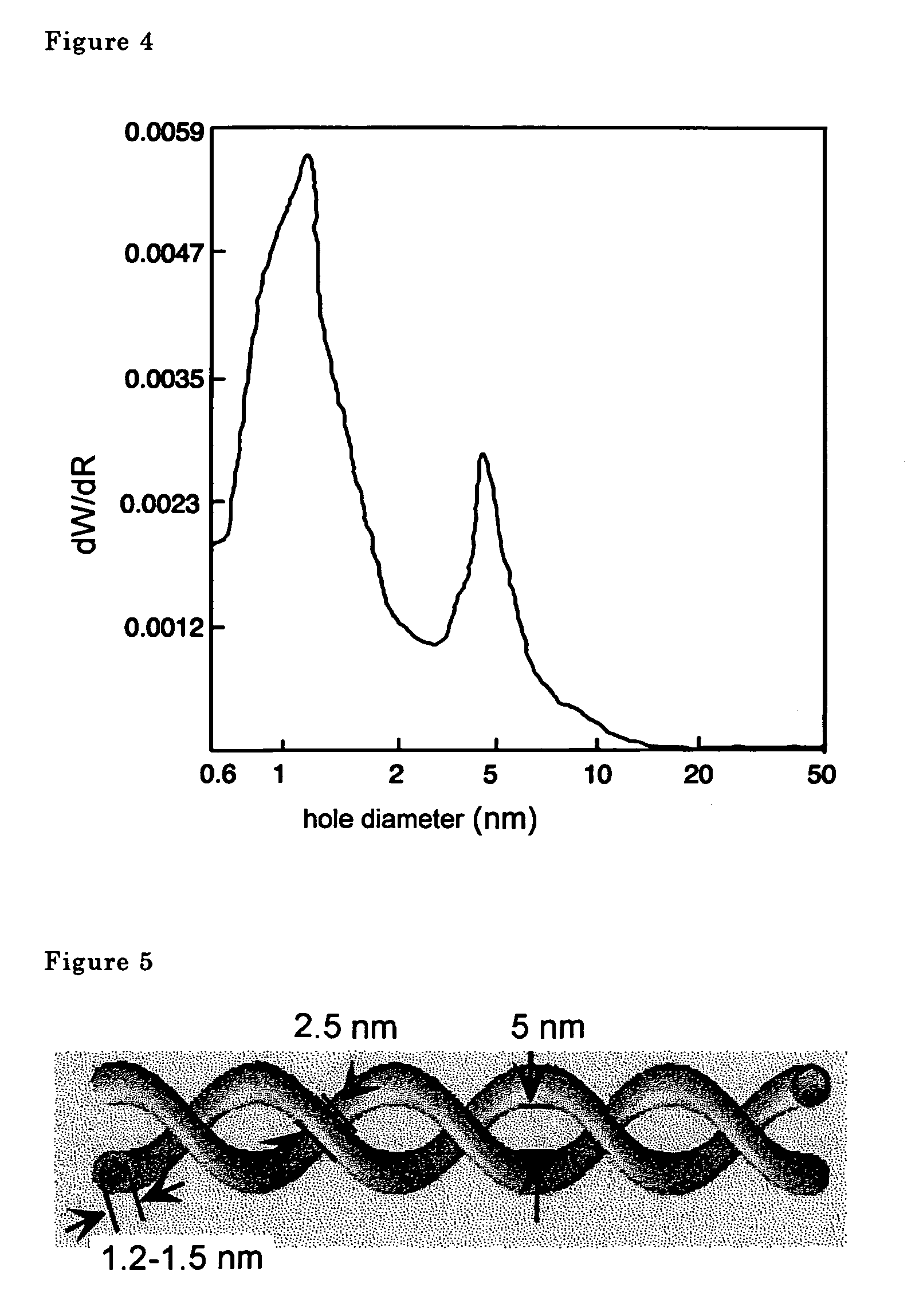Metal oxide nanotube and process for production thereof
a technology nanotubes, which is applied in the field of metal oxide nanotubes, can solve the problems of inability to perform the function repeatedly, low use value, and inability to achieve the goal, and achieves the effect of high use valu
- Summary
- Abstract
- Description
- Claims
- Application Information
AI Technical Summary
Benefits of technology
Problems solved by technology
Method used
Image
Examples
production example 1
[0050]p-Nitrophenyl-β-D-glucopyranoside (Tokyo Kasei) (250 mg) was dissolved in methanol / tetrahydrofuran mixed solvent (20 ml / 5 ml), and 10% palladium carbon (250 mg) was added to the solution. Hydrogen gas was introduced into the reaction solution for three hours under a nitrogen gas atmosphere at room temperature. The reaction mixture was filtered to remove the palladium carbon, and the filtrate was evaporated under vacuum to dry. The solid residue was purified using silica gel chromatography using tetrahydrofuran / chloroform mixed solvent (1 / 1, volume ratio) as the elution solution to obtain p-aminophenyl-β-D-glucopyranoside.
[0051]Yield 80–90%;
[0052]1H NMR (300 MHz, DMSO-d6): δ=3.44–4.10 (m, 6H), 4.76 (s, 2H), 5.25–5.31 (m, 3H), 5.60 (s, 1H), 6.70 (d, J=9.0 Hz, 2H), 6.95 (d, J=9.0 Hz, 2H), 7.37–7.46 (m, 5H); FT-IR (KBr): ν=3312, 2909, 1635, 1510, 1364, 1217, 1089, 1005, 1035, 999, 806, 706 cm−1; MS (NBA): m / z: 360 [M+H]+;
[0053]Elemental analysis:
[0054]Calculated (%) for C19H21NO6:...
example 1
[0062]p-Dodecanoylamino phenyl glucopyranoside (3 mg) obtained in Production Example 1 and p-aminophenylglucopyranoside (3 mg) were dissolved in water-methanol mixed solvent (10:1, volume ratio, 1 ml) by heating the solution to 70° C. Next, tetraethoxysilane (20 mg) was added, and benzylamine (6 mg) was subsequently added.
[0063]A gel was obtained through gradual cooling and was allowed to stand without any additional treatment for seven days at room temperature without agitation. The sample was sintered in a nitrogen gas atmosphere first for two hours at 200° C. and subsequently for four hours at 500° C. to completely remove the organic material. As a result, a metal oxide micro structure material (metal oxide nanotubes) was obtained.
[0064]The metal oxide nanotubes were examined using a transmission type electron microscope. A scanning electron microscope photograph is shown in FIG. 1, a transmission electron microscope photograph is shown in FIG. 2. Double spiral shaped fibers comp...
example 2
[0071]p-Dodecanoylamino phenylgalactopyranoside was used in place of p-dodecanoylamino phenylglucopyranoside in Example 1 and p-aminophenyl galactopyranoside was used in place of p-aminophenyl glucopyranoside to conduct the same operations described in Example 1, and similar double spiral silica nanotubes were obtained.
PUM
| Property | Measurement | Unit |
|---|---|---|
| hole diameters | aaaaa | aaaaa |
| hole diameters | aaaaa | aaaaa |
| hole diameter | aaaaa | aaaaa |
Abstract
Description
Claims
Application Information
 Login to View More
Login to View More - R&D Engineer
- R&D Manager
- IP Professional
- Industry Leading Data Capabilities
- Powerful AI technology
- Patent DNA Extraction
Browse by: Latest US Patents, China's latest patents, Technical Efficacy Thesaurus, Application Domain, Technology Topic, Popular Technical Reports.
© 2024 PatSnap. All rights reserved.Legal|Privacy policy|Modern Slavery Act Transparency Statement|Sitemap|About US| Contact US: help@patsnap.com










